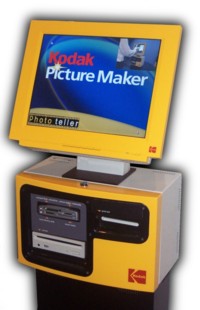|
Attached
comments made by Terry Rimmer, Director of Australian Activities
for the Photo Marketing Association International, in Inside Retailing
Magazine
(Reproduced with permission).
 Photo
Marketing Association director, Terry Rimmer, is surprisingly
blunt about how retailers were caught out by the sudden consumer
acceptance of digital photography formats: "The retail channel
wasn't ready." Photo
Marketing Association director, Terry Rimmer, is surprisingly
blunt about how retailers were caught out by the sudden consumer
acceptance of digital photography formats: "The retail channel
wasn't ready."
But Rimmer
says a terrific effort by retailers to understand the technology
and the opportunities to generate revenue from it is now beginning
to pay dividends for savvy operators.
"We're
now seeing the results of those efforts and for the first time
we are starting to see acceptance by the consumer."
The penetration
of digital cameras at consumer level is now approaching 40% of
households.
However, according to figures provided by Kodak, 90% of households
still use film cameras and around 70% of people who have bought
digital cameras still have a film camera in the house in regular
use.
Rimmer said
one of the larger issues the photographic trade was dealing with
was educating the consumer about printing of digital media - whether
it be at home or in a mini-lab or photo store or pharmacy.
"There's
plenty of evidence to show that once a customer understands this,
and provided you have the advantage of convenience, ease of use
and acceptable pricing, they will switch to printing - and at
a much higher rate than they did when they were 35mm film users."
Film sales
have fallen 8% in supermarkets over the last 12 months, and Rimmer
estimates a decline of 8% to 10% in processing rates.
He said many
competitors within the retail market had already made investments
in their business to keep up with the digital trend, but others
would be left behind.
"There
are lots of trends, but the overriding one is the relentless march
of digital imaging in all its forms. Its results are dramatic
and it is having a challenging effect on all those involved with
it.
"The
ones that have anticipated the changes, who were prepared and
invested in new technology, will be able to keep up and grow.
Those who haven't will find it difficult.
"There
has already been a consolidation, and it is continuing as we speak.
To properly set up a store to cater for digital imaging or services
is extremely expensive and in the early days the increase in business
that one could expect from this new market, may not justify the
investment," Rimmer said.
The key to
getting users of digital photography equipment to print their
images is quality, convenience, ease and the right price, according
to Rimmer.
"If the
things are right, then the consumer with a digital camera will
print in a digital store the same way as they used to bring along
their 35mm film.
"This
is significant, because the early user of digital cameras did
not have a high printing result and part of that reason was because
they needed to be educated."
|

